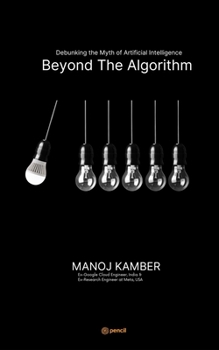Beyond the Algorithm: Debunking the Myth of Artificial Intelligence
Select Format
Select Condition 
Book Overview
Beyond the Algorithm: Debunking the Myth of AI"" is a thought-provoking book that challenges the common misconceptions surrounding artificial intelligence (AI). In this engaging exploration, the author delves into the intricacies of AI technology, dissecting its capabilities, limitations, and the myths that have emerged around it. The book takes a comprehensive approach to debunking the prevailing mythologies surrounding AI by going beyond surface-level perceptions. It delves into the inner workings of AI algorithms, providing readers with a deeper understanding of how AI systems operate and make decisions. By demystifying the algorithms, the author reveals that AI is not an all-knowing, sentient entity, but rather a sophisticated tool programmed by humans.
Format:Paperback
Language:English
ISBN:9356679185
ISBN13:9789356679184
Release Date:January 1
Publisher:Pencil (One Point Six Technologies Pvt Ltd)
Length:336 Pages
Weight:0.80 lbs.
Dimensions:0.8" x 5.0" x 8.0"
Related Subjects
Computer Science Computers Computers & Technology Design & Architecture PCs TextbooksCustomer Reviews
5 customer ratings | 5 reviews
There are currently no reviews. Be the first to review this work.





















